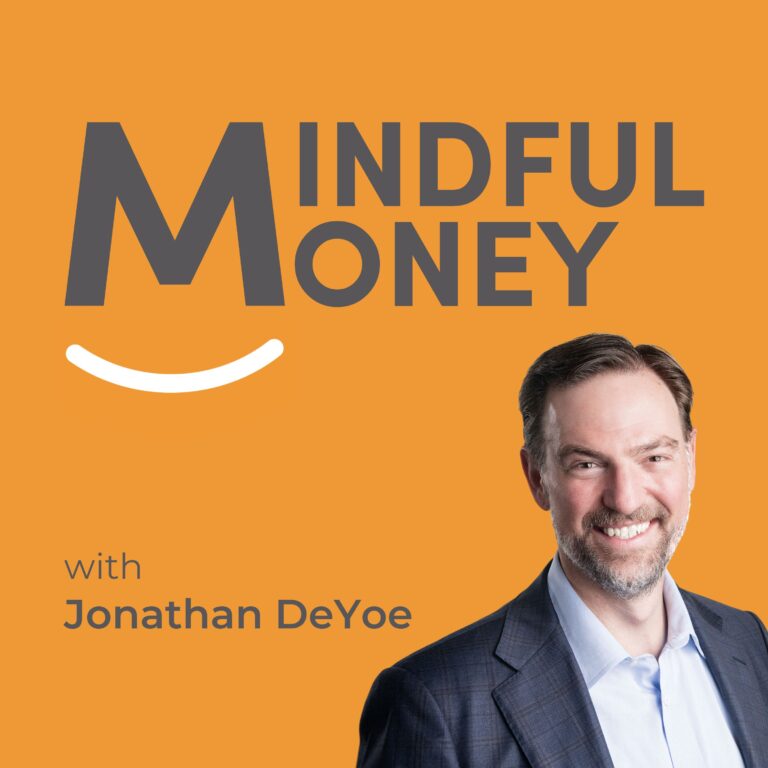This blog is the fifth of a 10-part series which covers everything you need to know to get started on your path to financial freedom:
1. The First Step in Any Financial Plan is NOT What You Think. We Start by Knowing What is Worth Seeking.
2. Developing Your Vision of a Perfect Life
3. Adopt a Savings Habit
4. Emergency Fund Basics
5. Eliminate High-Interest Debt
6. Saving and Investing for Retirement
7. Paying Down Low-Interest Debt and Building Taxable Savings
8. Simple, Basic, Mindful Investing
9. The Final Step – Portfolio Optimizers
10. The 10 Core Beliefs of Mindful Investors
A financial plan is meant to guide you toward your ideal future. This path isn’t always a straight line. Your financial road, like the rest of your life, is multi-dimensional. It’s not a matter of just how far you have to travel, but also – sometimes – we fall down. On such occasions, the path must traverse the many switchbacks of a steep and relentless climb. In financial terms, the difficulty of the climb is all about debt.
An overabundance of debt makes your journey harder and riskier. Too much debt – especially the wrong kind of debt – can make the climb seem impossible.
Because debt is so common and can cause so much pain, “getting out of debt” is the top financial priority for many people. Too much debt makes it hard to keep that vision of your perfect life in focus. Debt comes with guilt and shame. It can derail any small progress we make. It can destroy your savings habit and drain your emergency fund if you let it.
What Counts as High-Interest Debt?
Every credit card, payday or BNPL loan is likely high-interest. These typically carry 10-29% interest charges, which is more than you can reasonably expect to ever earn investing. If you expect your investment portfolio to earn a 6-7% return over the long term, but you’re carrying credit card interest of 10% or more, you’re losing financial ground.
Not only the above (credit cards et. al) qualify as high-interest. Any after-tax interest rate that is higher than the long-term average return you expect on your investments is working against you.
The Consequences of Debt
One thing that will help motivate you to get started is an awareness of what’s at stake. As great as it feels to grow wealth for the future, it feels equally bad (or worse, if you understand our negativity bias) to burden yourself with debt. A large amount of consumer debt relative to your income casts a pall over all parts of life.
Heavy debt results in poorer credit scores, which can pollute every aspect of your finances – from buying a car to renting an apartment to applying for a job.
Debt can also impact you physiologically. It is a major stressor that can increase your chances of heart disease, sleep disturbance and digestive conditions, among other health issues.
Not to be overlooked are the social effects, as debt produces a tremendous amount of shame, which may lead to self-defeating and self-destructive behaviors.
The opposite – freedom from debt – is good for your finances, and it will also improve your health and happiness.
How Much Should You Put Toward Debt?
There is no one-size-fits-all plan for attacking high-interest debt. The urgency of your need to eradicate debt increases with the size of your debt and the interest rate you’re paying.
Fair warning though, it’s possible to go overboard with debt reduction. A common pitfall to avoid is paying down debt so aggressively that you sacrifice your emergency cash reserves. Without emergency reserves, you will be in double trouble if a crisis strikes. That’s why paying off debt comes after building your emergency fund.
Once your emergency fund is in place, apply any excess money from your budget to your debt. To help speed the process along, you may be able to refinance your debt at a lower interest rate (if you have decent credit), negotiate your debt directly with vendors, or – in the worst cases – declare bankruptcy. Utilizing a low-interest balance transfer offer from a new credit card is another potential option, provided you don’t use the extra breathing room to take on more debt or increase your spending.
Steps for Eliminating High-Interest Debt
Though it probably goes without saying, the first and foremost step to getting rid of debt is to quit adding more debt. Do what you can to reduce or stop using your credit cards. Quit tapping your credit and convert yourself to an all-cash economy. I’ve heard stories of people putting their credit cards literally in the freezer. Whatever works for you is worth pursuing.
If you have an overwhelming amount of high-interest debt relative to your income, consider seeking professional help, such as credit counseling or debt-relief programs. Or, join Debtors Anonymous, if you would be comfortable with an accountability partner. Explore all options. There is always something you can do to climb out of the debt hole.
Debt Snowball vs. Debt Avalanche
There are two standard approaches to debt retirement. If you have more than one account with high-interest debt, some financial advisers favor paying off the smallest balances first, then moving up to higher balances as you apply additional freed income. The benefit of this approach, known as the debt snowball, is that totally knocking out one debt at a time provides a nice psychological boost, as you’re likely to eliminate the first accounts quicker and may feel more motivated to keep going.
I prefer the tougher, more financially sound approach: the debt avalanche. Here, you throw as much money as possible at the debt with the highest interest rates first, while continuing to pay the minimum balance due on all other accounts, plus 100% of any charges and monthly interest accrued. Then, you move on down to debts with lower interest rates. Generally, with this method you’ll save more money and retire your debt faster.
Pay Off Debt or Invest?
Both eliminating debt and investing for your future are key to living a happy financial life. But if you’re carrying debt at 10% interest or higher, it’s wise to pay off that particular debt first before investing extra money.
At the same time, it is crucial you start the compounding engine – the earnings on your invested earnings – as soon as possible because time is literally of the essence. Compounding returns are the primary driver of long-term financial freedom. At higher interest rates (over 10%), you want to focus on paying down the debt. And, if you can move all your debts to lower rates (say between 5% and 10%), then you want start investing even if it means living with some debt.
There are certainly exceptions. The big one is the 401(k) match. If you have access to a 401(k) and your employer has a matching program, you want to capture the full match. If they match your first 4% contribution, then you’ll want to contribute 4% to your 401k to capture the full match (that is a 100% immediate return on your investment). If they match only 50% of your contribution up to 6%, then you’ll want to contribute the full 6% (which means you are getting a 50% immediate return on your investment). You’ll have to find the right balance for you.
While you can’t ignore your high-interest debt, you don’t want to postpone building wealth either. If you have debt with rates in the 5% – 10% range, then you may want to consider a 50/50 split. Commit at least half of any excess money to paying off this moderately expensive debt before investing the remainder in your future.
Ultimately, the larger your debts and higher the interest rates, the more important it is to pay them off quickly. In such cases, investing may have to wait.
What About Low-Interest Debt?
Don’t be afraid of all debt. Whereas high-interest debt puts you behind, low-interest debt can reverse that equation. When interest rates on your debt are lower than 5%, you may make more money in the long run if you use your surplus cash for investing rather than for paying off cheaper debt.
I refinanced my house at the absolute perfect moment and secured a 15 year fixed loan at 1.875%. I always have to make the minimum payment, but why would I ever take money out of a portfolio producing between 6% and 8% long-term to pay off a loan that only costs me 2%? If I did, I would be hurting myself.
Not only do home mortgages carry low interest rates – meaning the return you see on your investments will likely be higher than the cost of your mortgage debt – they often have tax advantages as well.
Debt is inversely proportional to your happiness. More debt = less happiness. The greater the amount of debt you conquer, the happier you’ll become. Once you deal with your debt, you free up saving capacity for more fruitful uses.
I hope you can start to see how these items become dominoes.
Once you have a vision of your perfect life to pull you through the hard times, you start your savings habit (required to realize your vision). The first place your savings go is to your emergency fund and then you start to pay off your high interest debt. Soon we move onto the most important and universal savings goal…
Retirement.






